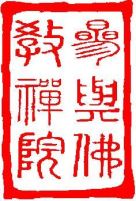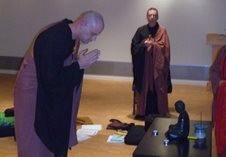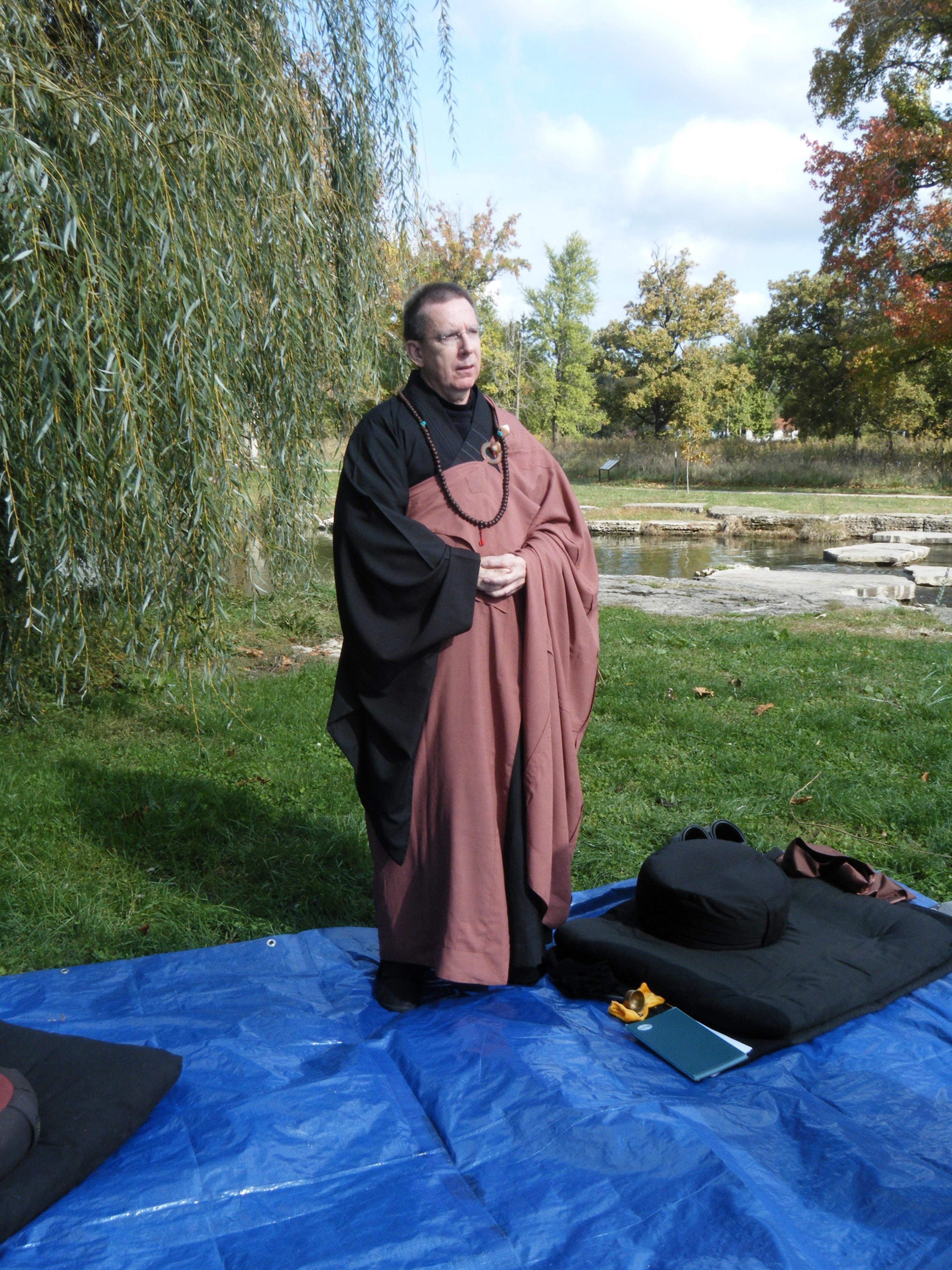By: Rev. David Shen-Xi Astor, Sensei
“A truly historical thinking must also think its own historicity.”
H. G. Gadamer
The history of the Chinese Buddhist school know as Zen (Ch’an) was created precisely out of the need to “transmit the mind” of its masters in a language to make it intelligible and attractive to others serious in engaging the wisdom of the past history of Buddhist thought in writings that others new to Buddhism could understand. These new narratives functioned to help transmit the core canon and legacy teachings of the past into a language and style that was practical and useful to promote the continuation of Buddhism for a different culture (Chinese). New language and rhetoric was always necessary in order to convey the meaning of Buddhist thought and values from one culture to another. This happens each time as Buddhism moved throughout the East Asian societies.
Now that Buddhism in all it’s various forms has come to the West, the need to bring the language of the East along with it’s customs and styles of meaning to Western ears has been making the same journey of discovery in language transformation for the past few decades or more. A primary question may be, “How does this historical consciousness relate to the basic understanding of Zen and Buddhism in general for us in the 21st century?” Especially now that Buddhism has encountered a developed scientific and technological age, as well as an educated modern consumer of spiritual ideas rooted in past centuries of practice. This is a story of dissemination of the beginning of Buddhist practice in the ancient culture of the Buddha and continuing through Indian and Chinese patriarchies up to the current recipients here in the West.
Within this overarching historical framework, I would like to pick out the topic of karma to give an example of how words and meaning of it is in an active discussion and debate within various schools of thought here in the West, specially in America, relative to giving a fresh look and understanding which may differ from the ancient teachings.
It has become resoundingly clear for me as my Buddhist study deepens and my attention to contemporary scientific understanding and social concerns broadens, that Buddhist philosophical and social values can be viewed as very modern in how it emphasizes the core principles in pragmatic terms. Of course this depends on what and who I read. At the same time, however, there are aspects to Buddhist doctrine that remains in ancient-language-of-understanding as it comes down to us in a century that is dramatically different then in the time of the Buddha. I often regret that the core canon is still presented in many translations that I still struggle with in practical terms perhaps caused of my Western education and cultural limitations. Mutual causality, impermanence and the notion of no-self that substantiate modern notions of human psychology has a contemporary voice. Karma (rebirth and mystical planes of existence) is spoken of in an ancient voice because it has almost no counterpart in Western language to convey. So karma, for example, is still spoken of in words that comes from past centuries. This does not necessitate ignoring karma if we want to present Buddhism as being relevant for the modern age. But it does require a very serious interrogation of how it has been interwoven throughout Buddhist philosophy. Karma requires creative re-description in my estimation. In this way we may begin to find answers to the question, “How is understanding the laws of karma a help to us today?”
When we study the Buddhist canon, we quickly learn from the various sutras that the community of monks (Sangha) was supported by the generosity of the lay members. This was the tradition in ancient India. The merit of this lay support (dana ) for the individual was the hope that they could be reborn as a bodhisattva so they could have a chance to gain enlightenment. This earning merit was considered an important aspect of the characteristic nature of karma. Karma in this case being “attached” to the individual. I call this Velcro karma. When viewed this way, karma was a kind of product that could be purchased by one’s efforts. the understanding of karma, and its value, was of great importance in ancient Hindu society. And also had to be considered when translated into the Zen language by the Chinese masters (which is a whole different topic for consideration).
One’s status in this ancient society determined quality-of-life realities. The laws of karma were used to justify what in our modern era would be called social injustice. To these ancient people, however, social justice situations were built into the moral fabric of the society as their life played out on the various social levels as universal fate. In a big way this understanding of how the universe functioned helped to maintain order, and life struggles were viewed as helping propel one to a better place after the present life ended.
Siddhartha, the Buddha, worked to transform this notion of the universe and through understanding the reality of mutual causality taught a very different interpretation of karma. He came to realize that accepting fate as a universal reality was the engine that continued human suffering. One of the pillars of the Four Noble Truths supports the wisdom of this philosophical sea-change. The intent of an individual’s actions is karma. Karma has no value, however, until it is given value. Our actions, and the effect of those actions, is multi-directional. That is to say that it effects both subject and object of one’s intentional actions. Yet it is not something we “have”. Considering that the only reality we can directly experience is what we can experience in the moment, our actions come from a sense of self and the choices we make. By intentionally choosing to make changes in how we are, we change the very nature of the person we continually transform into. (Maybe some day I will take this topic and address Thomas Aquinas’ Principles of Double Effect and Totality)
As we work to understand the kind of reason we are, we are confronted with how we can change, not only our character, but the community around us. We awaken to the reality that we are agents-for-change acting in the capacity of the social-self. As we gain wisdom in our practice we come awakened to the fact that karma drives what we have done and how we change as a result of both the intent of our actions and their consequences. If we want to be a different kind of person, we must gain insight in the world around us with a new kind of vision. Karma is not a fatalistic doctrine, but empowers us to find the good in our selves, and in others. In this way, karma brings a rebirth to us moment to moment as our actions bring change before our very eyes.
The challenge for Buddhism today is to continue to find a contemporary language that speaks to these ancient principles that have not always been successfully transformed from their original cultural language and context. This adds to the confusion we teachers encounter from our students when they begin to take a deeper interest in the Buddhist path, yet have gotten their initial understanding from works that are stuck in the past. Because of this, Buddhism often speaks with two voices, contemporary and ancient. Yet, if we keep the teachings simple, straightforward, and rich in modern understanding, we will move forward with confidence that we will find a common language from which Buddhist thought and values will ride on the stream of karmic change. This lesson the Buddha spoke of often seems so simple, yet so difficult to glimpse until we awaken to how things are beyond just words to convey.
What is important to recognize, however, is the way in which the understanding of how karma functions has been set before us today in works in historical and cultural terms reflecting a universe viewed through an ancient lens. I recognize that this is a struggle for contemporary Western students of Buddhism that work hard to honor our traditions and teachings as passed down to us from our legacy masters. How we choose to bring encompassing and corrective change to these core teachings may seem at times disruptive and unnecessary, however for Buddhism to effectively move into the next century we in the West must work to find the language and rhetoric for it to remain relative as it marches-on powered by the karmic energy the Buddha set in motion 2600 years ago. I might even suggest we may need a language of immediacy. Martin Heidegger said, “There arises the possibility that we undergo an experience with language, that we enter into something which bowls us over, that is, transmutes our relation to language.”
I might finally add, Zen did this too. Now we confront a new reality by honoring Buddhism’s historical values and yet finding a path that reflects a contemporary vitality for it to flourish into the future.


















































































